NFL: How All 32 Teams Got Their Names
Barry ShuckContributor IIIJune 14, 2011NFL: How All 32 Teams Got Their Names
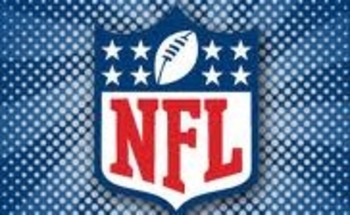
There is no spectator sport today that commands such an enthusiastic following as professional football. Every year, more and more sports and non-sports fans are drawn to the spectacle that has become America’s Game.
As much as the polished look that today’s National Football League (NFL) projects, it was not always that way. Clubs entered the league and folded or moved almost every year and often were based in small towns.
Team members were men from the community instead of players drafted live on ESPN in primetime. Most often, these men were coal workers, farm hands and policemen during the day, while engaging as gridiron gladiators on the weekends.
Players used to have jobs during the offseason. Oftentimes, teams had sponsors just as your softball team might have. Equipment was nominal and crude. Players had to supply their own shoes.
At one time, there was an unwritten rule by which black players weren’t hired. In fact, even as late as the 1960s, the Redskins were under the threat of civil rights legal action by the Kennedy administration, which forced them to draft (and hire) black players.
For the first 13 years of existence, the NFL was totally devoid of a playoff system. The league champion wasn’t even crowned until a vote at the owner’s winter meetings. When a playoff system was finally instituted, it wasn’t called the Super Bowl but rather the NFL Championship Game. The winner of the league title won a cup named after a referee.
But things change, and the NFL has undergone a transformation along the parallel of society over the years.
Out of the current 32 NFL teams, only half are still in their primary location or called by their original nickname. And in that group, 11 clubs were outright expansion teams. That leaves five franchises out of 32 that are still in the city in which they began and with the same nickname that has always brandished their identity.
So, how did each NFL team get its name?
First off, let’s do a clarification. There are two parts to every team name: 1) the location name which the team calls home and 2) the nickname of the team.
The location name doesn’t necessarily have to be the city’s actual appellation. The Golden State Warriors of the NBA wanted a more area-pleasing location name. After moving from Philadelphia, they were known as the San Francisco Warriors. Since the team was the only NBA team in the Bay Area, their desire was to attract fans regionally. And since their current home arena is based in nearby Oakland, the moniker still makes a lot of sense.
The second portion of an NFL team name is the nickname, which is both a verb and a noun by definition. The City of New Orleans has several nicknames, one being “The Big Easy.” But the NBA team’s nickname is the Hornets.
Therefore, “The Big Easy” is the noun, whereas “Hornets” is the verb connotation. So, both are properly used.
Often, team nicknames are derived from people, places or things that are indicative of the area’s culture. Such was the case with the Indiana Racers (Indy 500 annual race) of the defunct World Hockey Association or the Minneapolis Lakers. Another good example is the Dayton Triangles in the early days of the NFL. Their name came from three area factories which aligned in a triangle.
Let’s take a look at how each NFL team got its name. And for no particular reason, this list is presented in reverse alphabetical order.
Washington Redskins
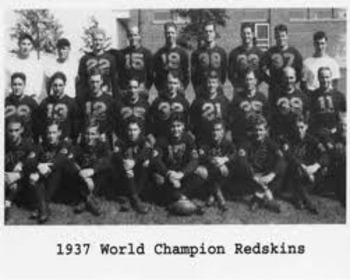
The franchise was first based in Boston. George Preston Marshall and three others acquired an NFL franchise in 1932 and named it the "Boston Braves" after the city’s existing baseball team, which back then was a common practice. At the end of the first year and with losses upward of $46,000, Marshall was left as the sole owner.
The following year Marshall hired as his head coach Lone Star Dietz, a Native-American, as well as many other Native-American players. The Native-American players disliked the name Braves so Marshall abandoned the name in favor of "Boston Redskins." On opening day 1933, the entire team lined up for the team photo in war paint, feathers and some even in full headdress.
In 1936 as the team was on its way to its first Eastern crown, Marshall raised ticket prices on game day from 50 cents to 75 without advance notice. This upset both the public as well as the media and although the team was winning, the crowds boycotted the games and picketed in protest outside.
This angered Marshall. Set to host the NFL Championship Game, he instead moved it to New York City, where his “home” Redskins lost 21-6 to the Packers marking the first NFL championship held on neutral ground.
Marshall owned a chain of laundries in the Washington, D.C. area and the following year because of the problems he encountered in Boston, he moved the club to his hometown and retained its nickname.
In 1958, Texas oilman Clint Murchison. Jr. struck a deal to purchase the Redskins. When Marshall changed several last-minute details in the contract, Murchison balked and cancelled. Murchison would later become the first owner of the Cowboys; and yes, his intention was to move the club to Dallas.
The Redskins have won five NFL titles, which includes three Super Bowls.
Origin Facts:
Established: 1932
Original Owner: George Preston Marshall
Original Colors: Burgundy and mustard yellow
First Stadium: Braves Field, seating 40,000
Retired Jerseys: No. 33 Sammy Baugh
Tennessee Titans

The Titans began as an original member of the 1960s American Football League (AFL) as the "Houston Oilers." The club was one of the AFL’s most dominant teams early on, capturing two of the league’s first three championships.
The Oilers were the first AFL team to sign an active NFL player. Later, the team would play their home games in the Houston Astrodome, which revolutionized the outdoor game.
In 1997, the Oilers announced that the club would relocate to Nashville. However, the new stadium was still two years from being completed. So the team moved to Memphis and became the "Tennessee Oilers," playing at the Liberty Bowl Memorial Stadium. The following season, the team played its home games in the city of Nashville but at Vanderbilt University.
In 1998, owner Bud Adams wanted a nickname change. He set up an advisory committee to choose the new moniker. In Nashville, there is a full-scale replica of the Parthenon and other Greek influences and the city was already known as “the Athens of the South.” Adams chose "Titans" from a list of suggestions to reflect heroic qualities.
Adams elected to call his team by the state name instead of “Nashville” to better represent the entire region instead of only one city.
This franchise has won two AFL titles: 1960 and 1961.
One note of interest: The Titans logo contains three red stars. These represent the three main cities in the State of Tennessee—Nashville, Memphis and Knoxville.
Origin Facts:
Established: 1960
Original Owner: Bud Adams
Original Colors: Columbia blue, red and white
First Stadium: Jeppesen Stadium, seating 37,981
Retired Jerseys: No. 43 Jim Norton, No. 65 Elvin Bethea, No. 34 Earl Campbell, No. 63 Mike Munchak, No. 74 Bruce Matthews, No. 1 Warren Moon
Tampa Bay Buccaneers
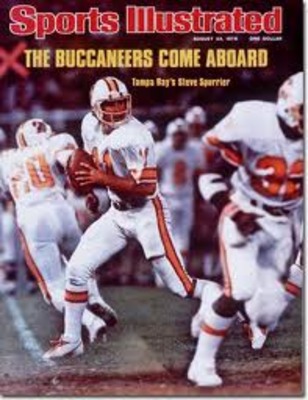
Tampa is located on Florida's western shore of the Gulf of Mexico. There are several large cities other than the city of Tampa that make up the region commonly known as Tampa Bay: Clearwater, Bradenton, Largo, St. Petersburg, Dunedin, Pinellas Park and Tarpon Springs.
This particular portion of Florida cuts out into a huge body of water which extends over 400 square miles and is named “Tampa Bay.” In fact, the Port of Tampa is currently the 10th-largest port in the United States.
“Tampa Bay” is not an actual city but simply a label commonly used for the region it represents, as well as the bay’s actual title.
Thus, with so many cities in such a compressed area every sports team has simply called themselves Tampa Bay, such as the NHL’s Lightning, the Arena League’s Storm or the Rowdies of the defunct North American Soccer League.
The Buccaneers got their nickname from pirate invasions of long ago.
Florida’s western coast (including Tampa Bay) was invaded almost annually during the late 18th and early 19th centuries by a Spanish captain named Jose’ Gaspar, commonly called Gasparilla.
When Tampa was awarded an NFL expansion team in 1976, the team held a “name-the-team” contest. From there, an advisory board selected “Buccaneers” from over 400 nickname possibilities based on the local pirate legend.
Today, the "Gasparilla Pirate Festival" held in January is celebrated every year and draws almost 500,000 partiers.
This team has won one NFL title: Super Bowl XXXVII.
Origin Facts:
Established: 1976
Original Owner: Tom McCloskey
Original Colors: Red, orange and white
First Stadium: Tampa Stadium, seating 74,301
Retired Jerseys: No. 63 Lee Roy Selmon, No. 40 Mike Alstott
Super Bowl
In 1960, the newest rival to the NFL began playing: the American Football League. After half a decade of running up player contracts, the two leagues secretly met to agree to merge into one league. Part of the agreement was a common draft beginning in 1967, plus a championship game played immediately after each league's own championship games had concluded.
In 1967, the first championship game between the two leagues was played in Los Angeles between the NFL Champion Packers and the AFL Champion Chiefs. The first two games were called the "AFL-NFL Championship Game."
Before the third "AFL-NFL Championship Game" between the AFL Champion Jets and the NFL Champion Colts, Chiefs owner Lamar Hunt began loosely calling the game the "Super Bowl" while attending various league and merger meetings. He called it a "bowl" game because in college football, bowl games were the most important and prominent games of each team's season. The "super" portion was coined from his children playing with a Wham-O toy called the Super Ball.
Soon, the term "Super Bowl" was being used by various media, and even coaches and players, although an unofficial name for the game.
The commissioner of the NFL, Pete Rozelle, didn’t like the term “super” thinking it had no sophistication and was simply an ordinary term. He recommended that the game be called "The Big One," but by the time the third game was set to play, the moniker "Super Bowl" was already wide-spread. For the third championship game, it was made official and the first Super Bowl was born.
Today, the Super Bowl is an unofficial national holiday affectionately entitled "Super Sunday." It is also the biggest food production day in the food retail business. One in every six televisions is bought just prior to the game. Snack companies increase production of potato and tortilla chips in anticipation of higher sales. Pizza delivery companies hire more drivers and sell more pies than at any other time of the year. The big game sends sales of beer, soda, chips and salsa through the roof.
Super Sunday is the third largest alcohol consumption celebration behind New Year’s Eve and St. Patrick’s Day. One in four workers will participate in a game pool while the weekend is the slowest for weddings.
Basically, the Super Bowl is the most influential amphitheater in the universe of TV advertising. In the world of advertising it is viewed as judgment day. New ad campaigns often begin their kickoff airing during the game.
The only television event that generates more viewers for a singular event is the UEFA Champions League final. What is unusual about the Super Bowl broadcast is that it was created on the premise that the primary audience would be watching the game on television.
Of the NFL's existing 32 teams, few have not played in a Super Bowl. Teams such as the Tennessee Titans and Minnesota Vikings have won their respective league titles, but failed to win a Super Bowl.
The NFL has named a league champion since 1920. The NFL titles won from 1920 to 1969 and the AFL titles won from 1960-1969 are still valid despite not being coined a Super Bowl champion. The Super Bowl is simply a modern term for the NFL Championship. After Super Bowl 50, if the NFL decided to change the name of its championship game to something new, the 50 Super Bowl championships would still be valid.
St. Louis Rams
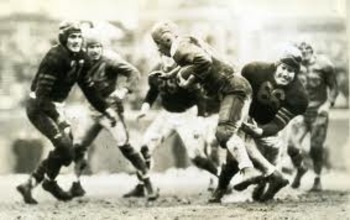
During the 1934 NFL season, there was a team named the Cincinnati Reds. They relocated in mid-season to St. Louis and were renamed the Gunners. After the season the franchise folded. For the next two NFL seasons, the league operated with an uneven number of teams and began its quest for another city to level out the schedule.
During the same time, the "Cleveland Rams" became a member of the one of the NFL’s first rival leagues, the American Football League (often referred to as AFL II) in 1935. The AFL II was in shambles after its first year, so Rams owner Homer Marshman applied for a spot in the NFL.
Coincidentally, two other prospective owners applied for the vacant NFL slot--one from Houston and the other from Los Angeles. Cleveland was granted the franchise based upon the fact that the other NFL owners preferred to keep the league in the Midwest and East because of travel concerns.
The Rams did not play the 1943 season because most of their players were involved in World War II; including their owner Dan Reeves who was a lieutenant in the Army.
In 1946, the Rams moved to Los Angeles and became the NFL’s first Pacific Coast team. Then in 1995, the "Los Angeles Rams" relocated again and became the "St. Louis Rams."
In 1983, the Rams drafted RB Eric Dickerson second overall. He would break the single season rushing record the following season with 2,105 yards—a record that remains today.
The team has won three NFL titles, including one Super Bowl.
The team got its nickname from the Rams’ general manager Damon Wetzel. His favorite football team was the Fordham University Rams. Marshman liked the nickname and coined his own team as such.
One note of interest: While in Los Angeles, the Rams were the first NFL team to use helmet logos.
Origin Facts:
Established: 1935
Original Owner: Homer Marshman
Original Colors: Dark Blue and red
First Stadium: Cleveland Municipal Stadium, seating 81,000
Retired Jerseys: No. 7 Bob Waterfield, No. 75 Deacon Jones, No. 74 Merlin Olsen, No. 85 Jack Youngblood, No. 78 Jackie Slater, No. 29 Eric Dickerson, No. 80 Isaac Bruce, No. 28 Marshall Faulk
Seattle Seahawks

In 1972, a group of Seattle business leaders formed “Seattle Professional Football, Inc.” in an attempt to secure an NFL team. Two years later, their efforts paid off and the City of Seattle was granted an expansion franchise.
The 1976 season brought into the fold WR Steve Largent, who is considered to be one of the best to play his position. He was inducted into the Pro Football Hall of Fame" href="http://en.wikipedia.org/wiki/Pro_Football_Hall_of_Fame">Pro Football Hall of Fame and later became a U.S. Congressman from 1994 until 2002.
A “name-the-team” contest was offered with over 1,742 different nicknames amidst 20,365 entries. "Seahawks" was suggested by 151 entrants and selected by new General Manager John Thompson.
A Seahawk is another name for an osprey, which are fierce hawks whose main diet is fish. They are found near bodies of water and can have up to a six-foot wingspan.
Origin Facts:
Established: 1976
Original Owner: Lloyd Nordstrom
Original Colors: Royal blue, forest green and white
First Stadium: Kingdome, seating 66,000
Retired Jerseys: No. 80 Steve Largent, No. 71 Walter Jones, No. 12 12th man
San Francisco 49ers
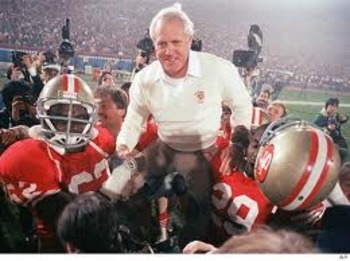
The 49ers began as charter members of the "All-America Football Conference" (AAFC) in 1946. In 1950, the 49ers were one of three teams which merged into the NFL.
From 1954 to 1957, the 49ers sported the famous “Million Dollar Backfield” which included QB Y.A. Tittle and running backs Joe Perry and Hugh McElhenny as well as fullback John Henry Johnson . All four have since been inducted into the Pro Football Hall of Fame and are the only complete backfield enshrined.
This club is one of the few teams that have not changed their city name or their nickname. In 1985, the club drafted what is considered the greatest wide receiver of all time: Jerry Rice. Other greats include Ronnie Lott and Joe Montana.
After San Francisco was awarded a franchise, the wives of the two original owners, Tony Morabito and his younger brother Victor, suggested the nickname "49ers" in honor of the men who were part of the 1849 gold rush in the Sierra Nevada mountains east of San Francisco.
In 1964, the team switched their colors from silver, red and white, to gold, red and white. And in 1994, the uniforms began using black as an accent and numeral dropshade.
This storied franchise has won five NFL titles (tied: fifth most) - all Super Bowls. The team is known as “The Team of the 1980s” due to their four Super Bowl victories and seven division titles.
Origin Facts:
Established: 1946
Original Owner: Tony and Victor Morabito
Original Colors: Silver, red and white
First Stadium: Kezar Stadium, seating 59,942
Retired Jerseys: No. 34 Joe Perry, No. 73 Leo Nomellini, No. 39 Hugh McElhenny, No. 79 Bob St. Clair, No. 12 John Brodie, No. 70 Charlie Kruger, No. 37 Jimmy Johnson, No. 16 Joe Montana, No. 87 Dwight Clark, No. 42 Ronnie Lott, No. 80 Jerry Rice, No. 8 Steve Young QB
San Diego Chargers
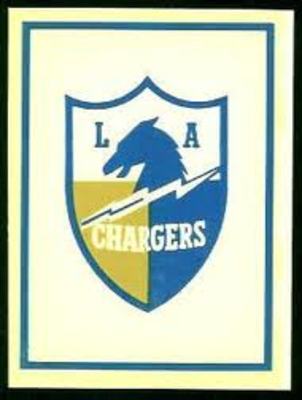
The "Los Angeles Chargers" were charter members of the AFL in 1960 and one of the first franchises awarded in the new league. Owner Barron Hilton was very wealthy and had ties to the Southern California region which was desirable for the infant league.
Before the first season began, however, Barron threatened to pull his team from the league unless another West Coast team was placed. The AFL eventually franchised a team in Oakland.
The problem in Los Angeles wasn’t on-the-field talent as the Chargers went 10-4-0 in their first season and won the Western Division crown. The sad sight was the empty seats in the cavernous LA Coliseum. For example, in the final game in Los Angeles, only 11,545 witnessed the Chargers' 50-43 thrilling victory over the New York Titans. Later, the club would play and lose 24-16 to the Oilers in the first-ever AFL Championship Game.
The next year, the Chargers relocated to San Diego and subsequently went 12-2-0, only to lose to the Oilers once again in the title game.
San Diego, in 1963, had what is considered pro football’s first Super Team. They had a tremendous offensive attack and threw the ball on almost every down during a time in pro football when the run dominated offenses.
A “name-the-team” contest was held the first year. From the finalists, General Manager Frank Ready chose "Chargers" and Hilton readily agreed. At the time, Hilton also owned a credit card company called Carte Blanche. He wanted his brand to become more memorable and desired fans to become “chargers.” Fan Gerald Courtney of Hollywood submitted the winning entry.
On the coaching staff from 1960-1965 was a young buck by the name of Chuck Noll.
Origin Facts:
Established: 1960
Original Owner: Barron Hilton
Original Colors: Powder blue, yellow & white
First Stadium: Los Angeles Memorial Coliseum, seating 93,607
Retired Jerseys: No. 14 Dan Fouts, No. 19 Lance Alworth
Pittsburgh Steelers
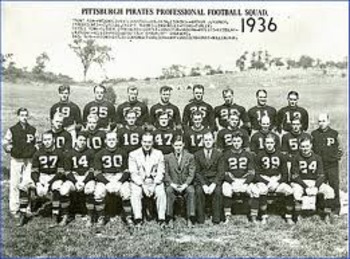
In 1933 Pittsburgh native Art Rooney was awarded an NFL franchise. He named his club the "Pirates" after the city’s baseball team, which was a common practice at the time.
At the conclusion of the 1939 season with years of futility on the field as well as the gate, Rooney wanted a new start and decided a new nickname was in order. The Pittsburgh Post-Gazette promoted a “name-the-team” contest. Several different entries were submitted, but in the end Rooney chose the moniker “Steelers.” Dozens of fans had submitted the nickname Steelers and the winner drawn was Margaret O’Donnell.
Rooney sold the Steelers for $160,000 in the winter of 1940 and then bought half-ownership of the Eagles for $80,000. Pittsburgh’s new owner, Alexis Thompson, renamed the club the "Iron Men." Before the next season resumed, Rooney and Thompson switched franchises so that Thompson could be closer to his home and work in New York City and Rooney wouldn't have to drive from his home in Pittsburgh across the state to Philly. Rooney then renamed his Eagles team the Steelers while Thompson renamed his Iron Men team the Eagles.
From that moment until as late as 1945, Pittsburgh was officially owned by the "Philadelphia Football Club, Inc."
During World War II, the team merged with the Eagles to become the "Steagles" and then melded with the Chicago Cardinals the following season and was known as Card-Pitt. But as the team was on its way to losing every game, a sportswriter labeled them the "Carpits."
In 1944, the Steelers were once again the team nickname. The colors were taken from the city's emblem. The franchise has won six NFL titles (fourth most) - all Super Bowls. The team is known as “The Team of the 1970s” due to their four Super Bowl victories and seven division titles.
Origin Facts:
Established: 1933
Original Owner: Arthur Rooney
Original Colors: Black, yellow & white
First Stadium: Forbes Field, seating 41,000
Retired Jerseys: No. 70 Ernie Stautner
Philadelphia Eagles
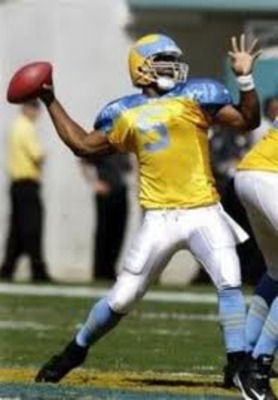
The Eagles began as the "Frankford Yellow Jackets." Frankford is a section of Philadelphia and began as a football club in 1899 known as the Frankford Athletic Association.
In the early 1920s, Frankford was regarded as one of the better independent football teams and often competed regularly against NFL teams. In 1924, the club was granted an NFL franchise and became the Yellow Jackets.
The team captured the 1926 NFL title with a 14-1-1 record. The Great Depression devastated the club and after the 1931 season, the team folded due to financial reasons. In July of 1933, Bert Bell borrowed $2,500 from his fiancée and along with his friend Lud Wray, they bought the remains of the Yellow Jackets. The Eagles used the Yellow Jackets old uniforms, which were yellow, blue and white, from 1933 to 1936. In 1936, new unies were purchased with green jerseys and socks, with the standard white helmets and pants.
Bert Bell renamed the club the "Eagles" after the eagle logo on the National Recovery Administration’s emblem. The emblem was in honor of President Franklin Roosevelt’s New Deals National Recovery Act.
In 1941, Bell and new half-owner Art Rooney swapped franchises with the new owner of the Pittsburgh Iron Men (formerly Steelers), Alexis Thompson. For several months, the Eagles were officially the Iron Men until Thompson renamed his new team the Eagles before any games were played.
One of the NFL's greatest linebackers played for the Eagles from 1949 through 1962: Chuck Bednarik.
The team has won three NFL titles.
Origin Facts:
Established: 1933
Original Owner: Bert Bell & Lud Wray
Original Colors: Powder blue, yellow & white
First Stadium: Baker Bowl, seating 18,800
Retired Jerseys: No. 70 Al Wistert, No. 15 Steve Van Buren, No. 60 Chuck Bednarik, No. 40 Tom Brookshier, No. 44 Pete Retzlaff, No. 92 Reggie White, No. 99 Jerome Brown
Oakland Raiders
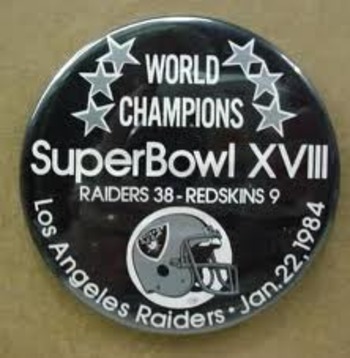
The Raiders were a charter member of the AFL in 1960. They entered that league as a desperation move.
The AFL already had its eight teams set to begin its inaugural season. However, on the eve of the first AFL draft, the Minneapolis group was awarded an NFL expansion and subsequently bolted the infant league. Obviously, the NFL’s intentions were to squelch the new league.
An eighth team was in order with Minneapolis’ deflection and would take two months to find a replacement owner group. Meanwhile, Los Angeles owner Barron Hilton wanted to drop out of the AFL unless the league gave his team a natural coastal rival.
Oakland businessman Chet Soda was head of a group that purchased the final franchise. The team was first dubbed the “Señors” in April of 1960 via a "name-the-team" contest held by the local paper. What was odd about the nickname was that Soda was known for calling everyone he met señor. The public hated the name, and several weeks later, the nickname was dropped for the supposedly runner-up choice the "Raiders."
Things were not rosy for the Raiders in that first season. For one, the team was forced to play its home games across the Bay in San Francisco and averaged a mere 9,611 fans per contest. The situation was so rocky that in 1961, the team was loaned $400,000 from Bills’ owner Ralph Wilson in order to stay afloat.
The AFL merged with the NFL in 1970 and the Raiders were placed in the American Football Conference (AFC) along with their other AFL brethren.
Back in 1967 when the merger’s negotiations first emerged, the NFL wanted to kill off the franchise in order to eliminate regional competition with the 49ers. It was discovered that when the merger proposal went before congress for approval, any club that folded or moved would only cause every legislator in the state to rise up in opposition to the merger as a whole. After that revelation, the Raiders were safe.
The team later moved to Los Angeles in 1982 and became the "Los Angeles Raiders' and then back to Oakland in 1995. The franchise has won one AFL title and three NFL crowns, each of which a Super Bowl.
Current owner Al Davis was on the coaching staff from 1963 to 1966 and was named the AFL's Coach of the Year in 1963.
Origin Facts:
Established: 1960
Original Owner: Chet Soda
Original Colors: Black & silver
First Stadium: Kezar Stadium, seating 59,942
Retired Jerseys: none
New York Jets
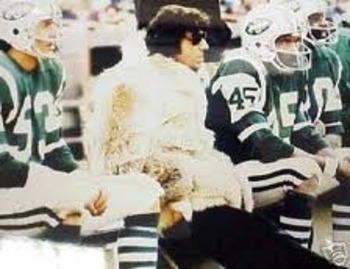
As with a lot of teams, the Jets were members of the AFL in its first season of 1960. It was important for the new league to anchor a club in New York City. And so, the New York Titans were born.
The NFL already had the Giants. New owner Harry Wismer called his team the "Titans" because he accessed “titans are bigger and stronger than giants.”
The team languished in the gloomy antiquated Polo Grounds with the gate usually fewer than 10,000 per game. After the first few games in 1962, the players went on strike after not receiving either game check. By the third year, debt mounted and only a $40,000 bailout by the AFL allowed the team to make payroll for the end of the season.
On December 15, 1962, the Titans lost 44-10 at home to the Oilers. The gate was announced as 8,167 but more realistically was around 2,000. The AFL office had been covering player checks since November and at the conclusion of the year, the AFL revoked Wismer’s franchise as the team went into bankruptcy.
A five-man group headed by Sonny Werblin purchased the club in 1963 for $1.3 million, which covered all debts including the $225,450 value of the team. The new organization was officially named the Gotham Football Club, Inc.
Werblin changed the colors to green and white to honor his St. Patrick’s day birthday, moved the club into Shea Stadium and renamed them the "Jets." His reasoning was that the United States was entering the space age and also that the new stadium was located between LaGuardia and JFK airports. Shea was also the home of the Mets, and the name association was friendly.
When the AFL and NFL merged in 1970, the Jets were placed in the AFC. And just like the Raiders, the NFL's initial plan was to fold the club in order to give the cross-town Giants New York City in its entirity; or relocate them to possibly Los Angeles. But the risk of repealing the merger by Congress caused the NFL brass to accept every AFL team and in their existing location.
The franchise has won one AFL title and one Super Bowl.
Origin Facts:
Established: 1960
Original Owner: Harry Wismer
Original Colors: Blue & yellow
First Stadium: Polo Grounds, seating 55,000
Retired Jerseys: No. 13 Don Maynard, No. 12 Joe Namath, No. 73 Joe Klecko
New York Giants

The New York Football Giants were founded in 1925 by Tim Mara, who paid $500 for the franchise. He stated that "any team in the city of New York was worth that much." It was an oddity at the time for a team to be located in such a large city in the NFL as many clubs were located in towns such as Toledo, OH, Pottsville, PA, Decatur, IL and Canton, OH.
In 1926, the team was close to bankruptcy and was saved only when the Giants hosted the Bears before 70,000 who paid to see Chicago’s Red Grange. The club rebounded and won the NFL Championship in only its third season.
At the time, every NFL club introduced their offensive players before every game. Around 1956, the franchise became known for its defensive stars, such as linebacker Sam Huff and defensive end Rosey Grier. This marked the first time fans put more emphasis on the defense and would chant "De-fense, de-fense, de-fense" during games. This was the first NFL team to do this.
In the 1980s, the team drafted LB Lawrence Taylor who would go on to become one of the game’s greatest defensive forces. Other notable players are Frank Gifford, Eli Manning, Y.A. Tittle, Harry Carson, Mel Hein, Fran Tarkenton, Roosevelt Brown and Phil Simms.
In 1970 when the NFL merged with the AFL, it was decided that the two AFL teams which shared a geographic region, the Jets and the Raiders, would have to be relocated. Wellington Mara, Tim Mara’s son who was now running the Giants, suggested that the Jets were too entrenched and were now a viable part of New York. Therefore, the Jets were allowed to remain in New York.
Tim Mara originally named the team after the National League baseball Giants, who were a longtime favorite in New York. At the time, baseball was the king of professional sports so owner Tim Mara wanted the same name recognition in hopes that fans would support both clubs. By the way, the baseball Giants got their name from all the giant buildings that made up New York City.
The franchise has won eight NFL titles (third most), four of which are Super Bowls. One note of interest: in all four Super Bowl victories, the Giants were losing at halftime.
Origin Facts:
Established: 1925
Original Owner: Tim Mara
Original Colors: Royal blue, red & white
First Stadium: Polo Grounds, seating 55,000
Retired Jerseys: No. 1 Ray Flaherty, No. 7 Mel Hein, No. 50 Ken Strong, No. 4 Tuffy Leemans, No. 32 Al Blozis, No. 42 Charlie Conerly, No. 16 Frank Gifford, No. 40 Joe Morrison, No. 14 Y. A. Tittle, No. 11 Phil Simms, No. 56 Lawrence Taylor
New Orleans Saints
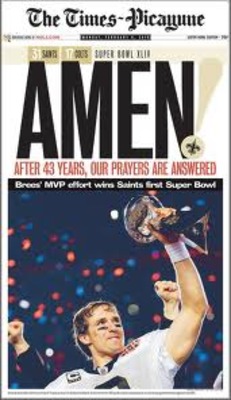
The Saints became a franchise as a direct result of the AFL-NFL merger.
Several pro football teams had looked to the City of New Orleans as a possible home, such as the Dallas Texans (AFL) in 1963. After years of war, escalating player salaries, and dwindling profits, the AFL and NFL began discussions about a possible merger of the two leagues.
On June 8, 1966, it was announced that the leagues would merge completely beginning with the 1970 season. All franchises in both leagues would remain in their present location, with a common draft and common preseason schedule beginning in 1967.
But, there was a problem. Even though representatives of both leagues agreed to the unification, the House Judiciary Committee (HJC) in Washington, D. C. had to exempt the merger from antitrust law sanctions. At the time, the chairman of the HJC was Emanuel Celler from New York.
By the fall of 1966, Celler refused to let the bill out of committee. The NFL commissioner, Pete Rozelle, was introduced to Louisiana House Majority Leader Hale Boggs; who was looking for some political enhancement ever since he voted for the civil rights amendment in his state. Boggs offered to help push the bill through in exchange for an NFL expansion franchise granted for the Crescent City.
Boggs covertly attached the league bill to a budget bill that was certain to pass, thus detouring Celler altogether. When the budget bill passed on October 21, 1966, the NFL and AFL got their merger and New Orleans got an immediate franchise.
At a league meeting on November 1, it became official. That date just happened to the Catholic holiday All-Saints Day. New Orleans has a large Catholic population and numerous centuries-old Catholic churches. It was only fitting to nickname the team the "Saints" for the day they were officially conceived.
History was made in 1970 when kicker Tom Dempsey booted a 63-yard field goal to defeat the Lions 19-17.
The franchise has won one NFL title: Super Bowl XLIV.
Origin Facts:
Established: 1967
Original Owner: John Mecom, Jr.
Original Colors: black, gold & white
First Stadium: Tulane Stadium, seating 80,985
Retired Jerseys: No. 31 Jim Taylor, No. 81 Doug Atkins, No. 57 Ricky Jackson
New England Patriots

The Boston Patriots began as a charter member of the AFL in 1960. AFL founder Lamar Hunt had been working with a group of investors in Seattle and another group in Baltimore, but neither were able to secure stadium rights. Hunt was then introduced to Billy Sullivan, a former Notre Dame football publicity director. With that meeting, a franchise developed for Boston—the eighth and final AFL entry.
The Patriots played the very first pre-season game of the new league as well as the very first regular season AFL game.
From 1961-1964, the Patriots were one of the top teams in the AFL. However, the team’s lone appearance in the AFL Championship Game was a loss in the 1963 contest. The team sported the league’s All-time leading scorer in running back Gino Cappelletti.
A year after the AFL merged with the NFL in 1970, the Patriots relocated into a new stadium situated in nearby Foxborough. The stadium was called Schaefer Stadium, which is one of the first stadiums named after a corporate sponsor (Schaefer Brewing Company). The land where the new digs reside was granted by Bay State Raceway, a harness racing track.
In the February 19, 1971 edition of the “Gettysburg Times,” it was announced that the club would be renamed the “Bay State Patriots", however, the NFL owners rejected the name change. A more regional team label was desired to attract fans between Boston and Providence, Rhode Island, so the appellation “New England” was inserted (instead of Boston) as noted in the March 23, 1971 issue of the New York Times.
Over the years, the Patriots have been involved in numerous memorable moments.
Wide receiver Darryl Stingley was injured in 1978 and spent the rest of his life as a quadriplegic. 1982 was the famous “Snowplow Game.” In January of 1986, the club was blown out by the Bears 46-10 in Super Bowl XX. Boston Herald reporter Lisa Olsen was sexually harassed in 1990. A proposed move to Hartford in 1999. The Coach Bill Belichick hiring drama. 2007 Spygate.
But with Belichick finally settling in with the Patriots, pieces began to fall into place. The franchise subsequently won Super Bowls in 2001, 2003 and 2004. The team would accomplish a sterling 16-0-0 record in 2007 and were on their way to a perfect 19-0-0 season only to lose Super Bowl XLII 17-14 with a mere 35 seconds left in the game.
The team is known as “The Team of the 2000s” due to their three Super Bowl victories and seven division titles.
The franchise got their nickname from suggestions from fans. Sullivan chose "Patriots" from the entries to reflect the area’s role in the American revolution.
Origin Facts:
Established: 1960
Original Owner: Billy Sullivan
Original Colors: Red, white & blue
First Stadium: Nickerson Field, seating 10,412
Retired Jerseys: No. 79 Jim Hunt, No. 20 Gino Cappelletti, No. 89 Bob Dee,
No. 57 Steve Nelson, No. 40 Mike Haynes, No. 73 John Hannah, No. 56 Andre Tippet, No. 78 Bruce Armstrong
National Football League
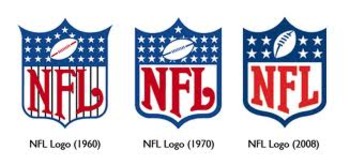
Just as most of its member clubs have endured change, the league itself spawned transformation of its own.
As early as 1900, there was talk about forming a professional football league. In 1902, the first National Football League made its debut. It wasn’t a league in as much as it was a group of teams, three to be exact: Philadelphia Phillies, Pittsburgh Stars and Philadelphia Athletics.
All three teams were financed by their parent baseball team with the Stars connected to the Pirates. Fabled Connie Mack was the GM of the Athletics. After two seasons, the league folded. This league has no connection with the National Football League of today.
During the early 1900s through 1918, several professional football leagues sprouted up across the United States. The Ohio League and the New York State League were among the largest and widely known, but others formed in Pennsylvania and the Pacific Coast.
The problems these early leagues encountered were numerous. Clubs had to be within travel distance which at the time was mainly by bus or train. Another situation was that teams routinely used college players under assumed names. But the largest problem was that players would jump from team-to-team at will depending on who was paying the most money to play that particular week.
Rising salaries and the desire to avoid financial ruin were the key components to why the NFL was birthed.
In 1919, several team owners decided to start a national professional football association. They had a meeting which decided that teams wouldn’t steal each other’s players. However, a salary base could not be agreed upon and no further action was taken. It would take another year before those conversations would finally come to fruition.
On August 20, 1920, Ralph Hay, owner of the Canton Bulldogs, held a meeting at his Hupmobile auto showroom in Canton, Ohio. Four teams were represented: Akron, Cleveland, Dayton and Canton. The group officially named their new league the "American Professional Football Conference" (APFC).
According to the Canton Repository, the three reasons which began the league were “to raise the standard of professional football in every way possible, to eliminate bidding for players between rival clubs and to secure cooperation in the formation of schedules.”
On September 17, 1920, another meeting was held at Hay’s auto dealership. So many team representatives showed up that it spilled into the showroom. Along with the four original teams, also represented were Muncie, Hammond, Rochester, Rock Island, Decatur and Racine (Chicago).
At this meeting, the league name was changed to the "American Professional Football Association" (APFA) which would carry as the league name for the first two seasons. In 1922, Chicago’s George Halas recommended the name change to the "National Football League."
After the NFL merged with the AAFC in 1950, the league was renamed the "National-American Football League." Months later, the “American” portion was dropped and instead, the divisions were renamed from Eastern and Western to American and National.
Minnesota Vikings
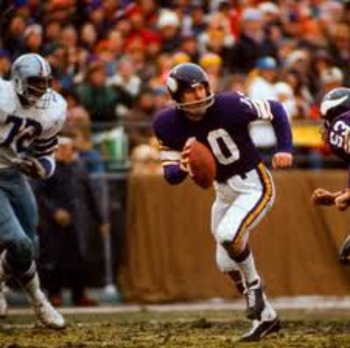
The Vikings became a franchise because of the AFL’s very existence.
A Minneapolis ownership group led by Max Winter bought an AFL franchise to begin playing in 1960. On the day before the AFL’s first draft, Winter’s group accepted an NFL expansion team instead and dumped the upstart league.
George Halas of the Bears led an NFL owner’s group whose quest was to destroy the AFL before it began. Halas had gone through the years of the AAFC in the late 1940s and knew exactly what another pro football league’s existence produces—loss of players and contract escalations.
The headline of the November 21, 1959 edition of the Minneapolis Star-Tribune read, “Minnesota to Get NFL Franchise.” But instead of beginning the team in 1960, it was decided to kick their new club off in the 1961 campaign as an expansion team.
The team took on the name of the state for several reasons. For one, to represent the entire region. The second was because Minneapolis and St. Paul are adjoining sister cities, and the club couldn’t be named for one without being named for the other. And the Minneapolis-St. Paul Vikings was simply too long of a title.
Minnesota is known as the hub of Scandinavian-American culture. Bert Rose, the first general manager of the club, named the team the "Vikings" because so many people in the state of Minnesota and the surrounding area traced their heritage back to Scandinavia.
The franchise has won one NFL title, the very last before the 1970 merger: 1969.
One note of interest: before the "Lombardi Trophy" was conceived and given to the league champ, the NFL champion was presented with the "Ed Thorpe Memorial Trophy." Each year's champion was engraved on the cup, and remained with the current NFL champion and then passed on to the next titleholder. Teams were also presented with a smaller replica which they were able to keep. In 1969, the Vikings won the last NFL title before the merger and were presented the Thorpe Trophy. Presently, the whereabouts of the trophy is unknown.
Origin Facts:
Established: 1961
Original Owner: Max Winter
Original Colors: purple & white
First Stadium: Metropolitan Stadium, seating 48,446
Retired Jerseys: No. 10 Fran Tarkenton, No. 70 Jim Marshall, No. 53 Mick Tingelhoff , No. 88 Alan Page, No. 80 Cris Carter, No. 77 Korey Stringer
Miami Dolphins

The Dolphins were the first expansion team of the AFL. Owner Joe Robbie and actor Danny Thomas purchased the franchise for $7.5 million. After Robbie was awarded the franchise, he wanted to place it in Philadelphia even though the NFL already had the Eagles. The AFL’s commissioner, Joe Foss, talked Robbie into going to South Florida’s tropical climate which was also without direct competition.
A “name-the-team” contest was held with a total of 19,843 entries. A committee comprised of local media selected Mustangs, Moons, Sharks, Dolphins, Suns, Mariners, Missiles and Marauders as the nickname finalists. "Dolphins" was selected and submitted by 622 entrants, with the winner Mrs. Robert Swanson.
In the first game, the Dolphins’ Joe Auer ran back the kickoff for a touchdown. The team would lose, however, 23-14 to the Raiders.
The turnaround for the club occurred with the hiring of head coach Don Shula in 1970. In 1972, the Dolphins garnished history as the team went a sterling 17-0-0. Although four other teams in the history of pro football have gone unbeaten during their season, this club is the only NFL team to go unbeaten and untied. Interesting enough, even though the team was 15-0-0. they played the AFC Championship Game on the road in Pittsburgh.
In 1983, five QBs were taken in the first round of the NFL draft. As the Dolphins were about to draft at No. 27—the second to last slot—the franchise selected what would become one of pro football's most prominent QBs: Dan Marino.
The franchise has captured two NFL championships, both Super Bowls.
Origin Facts:
Established: 1966
Original Owner: Joe Robbie & Danny Thomas
Original Colors: Teal, orange & white
First Stadium: Orange Bowl, seating 74,476
Retired Jerseys: No. 39 Larry Csonka, No. 12 Bob Griese, No. 13 Dan Marino
Kansas City Chiefs

The Chiefs began as a charter member of the AFL in 1960. It was originally based in Texas and called the "Dallas Texans."
In the spring of 1958, owner Lamar Hunt had tried to get an NFL expansion team or purchase an existing club and move it to Dallas. At one point, he thought he had a deal to buy the Chicago Cardinals but was rebuffed by Chicago owner Charles Bidwell who would constantly hedge on whether the Cards were really for sale or not.
In frustration, he teamed up with Bud Adams out of Houston and began his own league. As Hunt was lining up franchises in several cities and the new league was imminent, the NFL suddenly announced expansion into four cities; one of which just happened to be located in Dallas and eventually named the Cowboys. This was an obvious attempt to squelch the new league before it began.
The Texans were an early success on the field and would later capture the 1962 AFL Championship. Off the field was a totally different matter however. At the time, Dallas was not the sprawling metropolis that it is today with a population of only 679,684. It could barely support one team, much less two. In three years the Cowboys lost $2 million while Hunt’s Texans were in the hole $2.5 million.
Despite having a better team than the cross-town Cowboys, 1,100 more season ticket holders and a better gate average, Hunt couldn’t absorb the losses any longer.
He began to scout other cities. His first interest was New Orleans, but the city’s only large stadium was still segregated. Coincidentally, Kansas City mayor H. Roe Bartle had on his agenda to bring a pro football team to his city just as he had brought the Major League Athletics from Philadelphia years earlier.
Bartle wooed Hunt to transfer his club to the Midwest. He promised to enlarge the stadium and guaranteed three times the season ticket sales as the Texans had experienced in Dallas. After losing money in Dallas despite winning, Hunt relocated his club to Kansas City for the 1963 season.
At first, the team was to be called the Kansas City Texans. As a secondary thought, Hunt offered a “name-the-team” contest to drum up fan interest. A total of 1,020 different names were submitted amongst 4,866 entries. After the finalists were formulated, Hunt chose "Chiefs" in honor of Mayor Bartle, whose nickname was Chief. Other finalists were Royals and Mules.
This franchise has captured four championships: three AFL titles and one Super Bowl.
One note of interest: the Chiefs helmet logo is patterned after the 49ers logo.
Origin Facts:
Established: 1960
Original Owner: Lamar Hunt
Original Colors: Red & white
First Stadium: Cotton Bowl, seating 92,100
Retired Jerseys: No. 28 Abner Haynes, No. 16 Len Dawson, No. 78 Bobby Bell, No. 86 Buck Buchanan, No. 33 Stone Johnson, No. 36 Mack Lee Hill, No. 18 Emmitt Thomas, No. 3 Jan Stenerud, No. 63 Willie Lanier, No. 58 Derrick Thomas
Jacksonville Jaguars
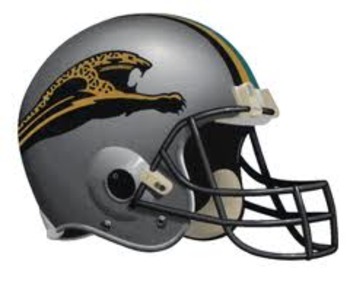
The Jaguars, along with the Panthers, are in all probability one of the final expansion teams in the NFL.
The City of Jacksonville has had several pro football teams in the past in other leagues such as the Sharks and Express of the World Football League (WFL), and the Bulls in the United States Football League (USFL). In the WFL, Jacksonville was second in the league at the gate while in the USFL the Bulls ran away with the league's attendance title.
Jacksonville also hosted numerous NFL preseason games over the years. The Baltimore Colts were in relocation discussions with the city in 1983 and in the late 1980s, the Houston Oilers came close to calling this Atlantic beach city their home.
In 1993, the NFL unveiled plans to expand to two new areas. Eventually Charlotte, North Carolina was granted the first franchise. The other would be between St. Louis, Jacksonville, Baltimore or Memphis. On November 30, 1993, Jacksonville was announced as the winner.
A “name-the–team” contest brought forth thousands of nicknames. The finalists were Stingrays, Sharks, Jaguars and Panthers. With "Jaguars" the choice, fan Ray Potts was randomly selected as the contest winner.
Origin Facts:
Established: 1995
Original Owner: Wayne Weaver
Original Colors: Teal, black, gold & white
First Stadium: Gator Bowl, seating 67,164
Retired Jerseys: none
Indianapolis Colts
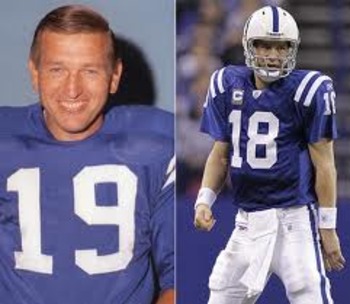
This storied franchise first began in South Florida. In 1946, the AAFC placed a team in Miami called the Seahawks. The team accrued over $300,000 in debt and was eventually taken over by the league. The following season, the club was purchased by a group led by Robert Rodenburg and the team was relocated to Baltimore.
In 1950, Baltimore was one of three AAFC teams which merged into the NFL. After going 1-11-0 with horrid crowds the first NFL season, then-Colts owner Abraham Watner sold the club to the NFL for $50,000. The team was moved to Dallas and renamed the Texans for the 1952 season. During the year, the team was taken over by the NFL for financial reasons. The next year, the team was back in Baltimore.
In 1983, the Colts began talking with prospective cities for a possible relocation, such as Phoenix, Jacksonville, Birmingham, Indianapolis, Memphis and New York. The team moved to Indianapolis in 1984.
Some of the NFL’s most eminent players have found a horseshoe on their helmet including Johnny Unitas, Bubba Smith, Peyton Manning and Raymond Berry, to name a few.
This franchise has won five NFL titles, including two Super Bowls.
The team got its nickname from a “name-the-team” contest won by Charles Evans of Maryland. The nickname "Colts" was chosen because of the tradition and history of horse racing and breeding in the area.
Origin Facts:
Established: 1946
Original Owner: Harvey Hester
Original Colors: Orange, green, silver & white
First Stadium: Burdine Stadium, seating 74,476
Retired Jerseys: No. 89 Gino Marchetti, No. 22 Buddy Young, No. 70 Art Donovan, No. 82 Raymond Berry, No. 19 Johnny Unitas, No. 24 Lenny Moore, No. 77 Jim Parker
Houston Texans
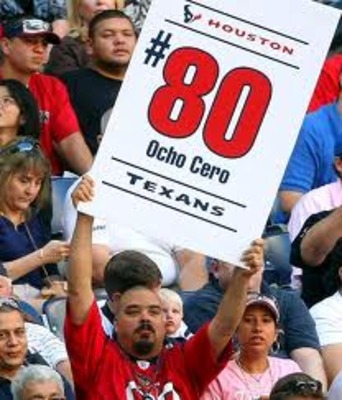
When the Houston Oilers left town for Nashville in 1997, the city felt the void left from not having pro football for the first time in 36 years.
That same year Bob McNair and his business partner, Chuck Watson, were turned down for an NHL franchise. Not to be deterred, they turned their attention towards the NFL and a possible expansion franchise. First on the agenda was a plan with the Houston Livestock Rodeo to push for a retractable roof stadium which would be shared with the future NFL team.
At the time, the NFL was focused on returning to Los Angeles. But chaos among L.A. officials coupled with McNair’s aggressive attitude and plans placed Houston on the short list along with L.A. and Cleveland. In 1998, the NFL Stadium Committee made a visit to view the proposed stadium and came away impressed. The league had already given L.A. six months to work out a feasibility ownership plan and stadium deal.
When the Los Angeles effort failed, at the owner’s meeting in October of 1999 the NFL owners voted 29-0 to award an expansion franchise to McNair for $700 million.
Months of extensive focus groups brought forward five nicknames as finalists: Stallions, Bobcats, Texans, Wildcatters and Apollos. On September 6, 2000, before thousands of fans and a live ESPN2 audience, owner Bob McNair unveiled the logo, colors and nickname of the "Texans."
In the team’s first regular season game, the club hosted the Cowboys and came away happy with a 19-10 victory. It marked the first time an expansion team had won its opening game since 1961.
One note of interest: the single star located within the logo represents the Lone Star of Texas.
Origin Facts:
Established: 2002
Original Owner: Bob McNair
Original Colors: Red, white & blue
First Stadium: Reliant Stadium, seating 71,500
Retired Jerseys: none
Green Bay Packers

The Packers began as a football team beginning in August of 1919. Curly Lambeau and George Calhoun were high school rivals and wanted to start a football team. At the time, Lambeau was a shipping clerk for the Indian Packing Company, who distributed canned meat sold as "Council Meats."
Lambeau solicited his employer into becoming the team sponsor. The company agreed and put up $500 for equipment and also agreed to allow the team to use its athletic field for practices.
The stipulation the company placed on Lambeau for its generosity was that the team would be named after the sponsor in order to advertise, much the same way a company softball team does today.
Nicknamed the "Packers", the team played for two seasons with makeshift schedules against other teams from Wisconsin and Upper Michigan. In 1921, Lambeau was able to gain admission into the NFL, which was currently called the APFA and had just completed its maiden season. At the conclusion of its first year, the franchise was revoked and kicked out of the league for using college players under assumed names, a direct violation of league bylaws. Lambeau appealed to the league and then paid $250 to reinstate his team before the next season began.
In 1923, the team once again was about to fold and was in need of $5,000 to continue. Five local businessmen, labeled the “Hungry Five,” helped incorporate the team as a non-profit corporation. They then sold stock, raised funds and established the Green Bay Packers Board of Directors.
The five men were Curly Lambeau, Andrew Turnbull, Gerald Francis Clifford, Dr. Webber Kelly and Leland Joannes. A sportswriter coined the group’s label because each seemed to always have their hands out for funds.
Today, the Packers are the only non-profit, community-owned major league professional sports team in the United States. One stipulation placed into the original covenants of the non-profit charter was that if the Packers were ever sold, the profits would benefit a local VFW Post; a stipulation that still exists.
As of the 2010 United States Census, Green Bay, Wisconsin had a population of 104,057 and is the lone remaining small city team in the universe of professional sports franchises.
The Packers have won 13 NFL titles, more than any other team. The franchise is also the only NFL organization to win three consecutive championships, and they executed this twice: 1929, 1930 and 1931, plus 1965, 1966 and 1967. The 1966 and 1967 championships are actually double championships as they were NFL Champs plus Super Bowl Champs (at the time called the "AFL-NFL Championship Game").
The team is doubly known as teams of the decades: “The Team of the 1930s” because of their four NFL Championships and four division titles; plus “The Team of the 1960s” due to their five NFL Championships, two Super Bowl victories and six division titles.
The most notable Packer is former head coach Vince Lombardi, who took the helm from 1959-1967. Today, the Super Bowl trophy bears his name. Many of the NFL’s greatest players called Lambeau Field home including Bart Starr, Brett Favre, Ray Nitschke and Don Hutson, to name a few.
Origin Facts:
Established: 1921
Original Owner: Curly Lambeau
Original Colors: Blue & yellow
First Stadium: Hagemeister Park, seating: standing only
Retired Jerseys: No. 3 Tony Canadeo, No. 14 Don Hutson, No. 15 Bart Starr, No. 66 Ray Nitschke, No. 92 Reggie White
Detroit Lions
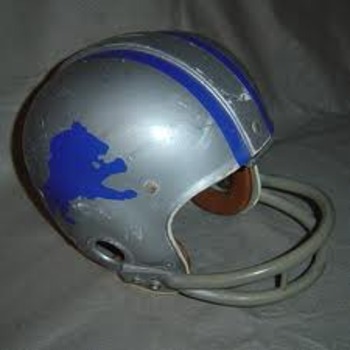
This team began in 1930 as the "Portsmouth Spartans." When the City of Portsmouth completed their new football stadium, the NFL offered a franchise. At the time, Portsmouth was the second smallest city in the NFL behind Green Bay.
In its second season, Portsmouth would tie the Bears for the league’s best record and then lost 9-0 to Chicago in the NFL’s first playoff game.
In spite of winning teams every year, financial distress coupled with the Great Depression decimated the team’s future. In 1934, a group from Michigan led by George Richards purchased the club for $7,952 and relocated it to Detroit.
Richards named his club the "Lions" to go along with baseball’s Tigers. He would comment that the lion was the monarch of the jungle, and he intended him team to become the monarch of the NFL.
The team was already loaded with talent in its first season as the Spartans were always a contender. The team would host the Bears on Thanksgiving Day, a tradition that continues today. The following season the Lions captured the 1935 NFL Championship.
Unfortunately for fans, the club has encountered two winless seasons: 0-11-0 (1942) and 0-16-0 (2008).
However, the Lions would dominate the 1950s as the club imprisoned the division four times and won three NFL Championships (1952, 1953 and 1957). This franchise has won a total of four NFL titles.
One of the greatest NFL running backs played for the Lions: Barry Sanders.
Origin Facts:
Established: 1930
Original Owner: The City of Portsmouth, Ohio
Original Colors: Purple & white
First Stadium: Universal Stadium, seating 8,200
Retired Jerseys: No. 7 Earl Clark, No. 20 Lem Barney, No. 20 Billy Sims, No. 20 Barry Sanders, No. 22 Bobby Layne, No. 37 Doak Walker, No. 56 Joe Schmidt, No. 85 Chuck Hughes, No. 88 Charlie Sanders
Denver Broncos

The Broncos were in financial trouble from the start, beginning their inaugural year as a charter member of the AFL in 1960. Owner Bob Howsam was limited financially. He had owned a minor league baseball team called the Denver Bears and in 1958 inquired about an NFL team but was told expansion was years away.
When he bought the AFL franchise, Howsam made every short-cut he could possibly make. He purchased used uniforms from the extinct Copper Bowl. One part of the uniforms were vertical striped socks, which has become one of the team’s most memorable early-year attributes.
In 1963 the team hired Jack Faulkner as head coach. His first decision was to change the team colors from brown and gold to today’s orange, blue and white. The second order of business was a public sock burning ceremony. Faulkner did keep two pairs, for whatever reason, and today one pair an be viewed at the Pro Football Hall of Fame.
The Broncos competed in the first-ever AFL game and came away with a 13-10 victory over the Patriots. In 1967, they became the first AFL team to defeat an NFL team in a pre-season game.
In 1965, the club came close to relocating to Atlanta, but a local ownership group headed by Gerald and Allan Phipps put together a package and kept the team in Denver. Fan support subsequently increased from 7,993 season ticket holders to almost 23,000.
A “name-the-team” contest was held in 1960. "Broncos" were the most submitted partly because of the popularity of a minor league baseball team in the 1920s of the same name.
The franchise has won two NFL titles, both Super Bowls.
Origin Facts:
Established: 1960
Original Owner: Bob Howsam
Original Colors: Brown & gold
First Stadium: Bears Stadium, seating 51,706
Retired Jerseys: No. 7 John Elway, No. 18 Frank Tripucka, No. 44 Floyd Little
Dallas Cowboys

The Cowboys became the NFL’s first expansion team and was the direct result of the rival AFL.
All through the 1950’s, the NFL rejected the idea of expansion. When the newly formed AFL announced their plans to begin play in 1960, the established league suddenly announced plans to expand into four cities, the first of which would be Dallas. The AFL’s flagship team, the Texans, just happened to also be located in Dallas.
Before any owner, office staff, coaching staff or players were assembled, the team was labeled the "Steers" by the league. At the owner’s meeting in Miami Beach, Florida, Clint Murchison and Bedford Wynne were awarded the expansion franchise, which was the NFL's hope to squelch the new AFL Dallas entry.
The team was later renamed the "Rangers", which at the time was also the name of the local AAA minor league baseball team. But the baseball team had announced plans to relocate the following season.
The addition of Dallas made an uneven number of clubs in the NFL. Dallas was designated as a “swing team” and played every team once instead of twice each within division opponents.
Tex Schramm was hired away from the Rams to take the post of general manager. In the December 29, 1959 issue of the Dallas Morning News, the headline proclaimed, “Rangers Hire Tom Landry.” Coach Landry, a Texas native and University of Texas graduate, had also been courted by four other pro teams, one being the cross-town Texans.
The Rangers would get a leg up on the Texans when they signed the rival teams' first-round draft choice QB Don Meredith to a personal services contract. With the emergency timing of forming the Dallas entry, the NFL college draft had already occurred. In order to fill the new team’s roster, the NFL held a dispersal draft from players left unprotected from each member team. When the dispersal draft was held, the team was still called the Rangers.
A problem crept up when the baseball Rangers changed Major League affiliates and decided to stay put instead of the planned relocation. The Dallas NFL management didn’t want to create confusion and decided to change nicknames. Although Dallas wasn’t exactly the center of the livestock universe, the nickname "Cowboys" was catchy.
The 1960 Cowboys would become one of pro football’s few winless teams as they drudged on to a 0-11-1 record. But with good draft picks, the team would go on to become one of the NFL’s greatest football teams. At one time, the team went to 18 straight playoff appearances.
The Cowboys would draft one of the greatest running backs in the history of the league when they traded up four slots (via the Steelers) to select Emmitt Smith, III in 1990. Smith would go on to become the NFL’s career rushing leader with 18,355 yards.
The franchise has won five NFL titles (tied: fifth most) - all Super Bowls. The team is known as “The Team of the 1990s” due to their three Super Bowl victories and six division titles.
One note of interest: in the March 22, 1960 issue of the Dallas Morning News, sports editor Bill Rives wrote a column about the recent name change from Rangers to Cowboys. His column applauded the change in order to avoid confusion with the baseball team. He also penned that at some point, sports writers would eventually abbreviate Dallas’ new nickname to "the Boys." This marked the first time the team was referred to as such.
Origin Facts:
Established: 1960
Original Owner: Clint Murchison & Bedford Wynne
Original Colors: Blue & white
First Stadium: Cotton Bowl, seating 92,100
Retired Jerseys: none
Cleveland Browns

The Browns began in the AAFC in 1946 and competed in that league until 1949. The team dominated the new league and secured every championship. Paul Brown was head coach and became known as one of pro football’s most prominent strategists.
For the next decade, his team would govern the game of professional football while his coaching methods would redesign the game.
In 1950, the Browns were one of three teams which merged into the NFL. Cleveland promptly won their division and then defeated the Rams 30-28 to win the NFL Championship in their first year in the league. After the game, NFL commissioner Bert Bell told Coach Brown, “You are the greatest team to ever play football.”
Cleveland would go on to win a total of four NFL titles to go along with their four AAFC crowns. The Browns would later draft one of the greatest players to ever suit up for pro football—Jim Brown.
The team got its name from a “name-the-team” contest prior to its first season. Navy sailor John Hartnett won the contest with the name "Panthers." However, local businessman C. X. Zimmerman contacted management and informed them that he owned the rights to the name “Cleveland Panthers.” The Panthers were members of the very first American Football League in 1926 (commonly called AFL I). Midway through their first season, the Panthers folded.
So it turned out, the new Panthers needed a new nickname. Paul Brown was already entrenched as one of the most famous individuals in the State of Ohio.
While as head coach at Massillon (Ohio) High School, his teams accumulated an 80-8-2 record over nine seasons with four state titles. Today, the school’s address is 1 Paul E. Brown Drive S.E. while their stadium is named “Paul Brown Tiger Stadium.”
From there Coach Brown took the helm at Ohio State where he won a national championship. World War II shoved the coach into the Navy where as an enlisted officer he coached the Great Lakes Naval Academy football team which defeated several national college powers.
With all the recognition and notoriety, while searching for a new nickname, the press and fans would routinely refer to the club as “Brown’s team.” A second contest was held with "Browns" being the most submitted. William Thompson was randomly selected as the winner.
At first, Brown objected to the team being named after him but later rescinded his opposition and agreed.
The team is known as “The Team of the 1950s” due to their three NFL Championships and eight division titles. During this time, they would also lose in the championship game four times.
Origin Facts:
Established: 1946
Original Owner: Mickey McBride
Original Colors: Orange, brown & white
First Stadium: Cleveland Municipal Stadium, seating 81,000
Retired Jerseys: No. 14 Otto Graham, No. 76 Lou Groza, No. 32 Jim Brown, No. 46 Don Fleming, No. 45 Ernie Davis
Cincinnati Bengals
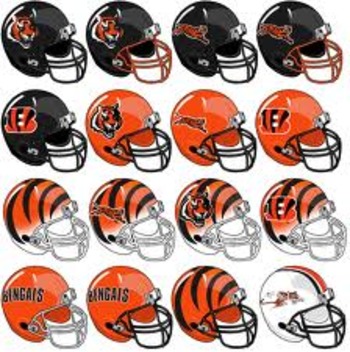
The City of Cincinnati has a rich history in pro football. The Celts played in the unofficial Ohio League from 1910-1919 and scheduled exhibition games against several NFL teams in 1920 and 1921. From 1937-1941, a team called the Bengals competed in the third American Football League (commonly referred to as AFL III).
In 1965, legendary coach Paul Brown was ready to get back into pro football after being out of the game for three years. Brown met with Ohio Governor Jim Rhodes to discuss whether the state could entertain another pro football club. Both men would be in agreement.
The City of Cincinnati approved the construction of the 60,389-seat Riverfront Stadium in 1966. The following year, a group headed by Brown was awarded the AFL’s second-ever expansion franchise for $10 million.
Having the famous coach associated with the AFL was a huge ego boost to the younger AFL as Brown was already enshrined into the Pro Football Hall of Fame.
Brown would become head coach as well as part-owner. He named the team the "Bengals" in order to give the new team a connection with the city’s professional football past. Oddly enough, at the time, the city’s zoo housed a rare white Bengal tiger.
Brown chose as one of the team colors the familiar orange his former team, the Browns, used. He then added black to represent colors associated with a tiger. A solid orange helmet was designed (also similar to the Browns) with the word “Bengals” arched across the sides. Today, the Bengals have had one of the most unique helmets in the history of the NFL. Interesting enough, back in 1968 another helmet pattern was presented to Brown which he rejected, which was a striped helmet comparable to the helmet design in existence.
The Bengals began playing in the 1968 season and defeated Denver 24-10 in its first home game. Brown stepped down as coach in 1975 and then served as GM and eventual majority ownership until his death in 1991.
Brown himself was not a huge supporter of the AFL. Without any options to obtain an NFL team, his only recourse, was to approach the AFL. Brown already knew that the two leagues were going to merge beginnng in 1970 and that inclusion into the AFL would guarantee acceptance into the established league.
Origin Facts:
Established: 1968
Original Owner: Paul Brown
Original Colors: Black, orange & white
First Stadium: Nippert Stadium, seating 35,097
Retired Jerseys: No. 54 Bob Johnson
Chicago Bears

One of the NFL’s most storied clubs; the team began as a company football team.
George Halas was an exceptional athlete at the University of Illinois where he excelled in baseball and football. He was named the Rose Bowl MVP. After a stint in World War I, he played minor league baseball and eventually landed on the New York Yankees. A hip injury would end his baseball career.
In 1919, he accepted a civil engineering job in the bridge department of the railroad. On weekends, he played for the Hammond Pros, an independent football team. A spectator at one game was a man by the name of Augustus Staley who owned a starch factory in Decatur, Illinois.
Staley had a company baseball and basketball team he used for mainly advertising purposes. He wanted to start a football team and offered Halas a position with the A. E. Staley Company. His duties would be to learn the starch business, become the athletic director of the company, and play on the company teams. Halas went back to the railroad and thought about whether he would be happy sitting behind a desk for 25 years. He then accepted Staley’s offer.
Halas played on each company sports team and started the football squad. The team colors chosen were those of his college team. It just so happened that a new league was being formed. Halas attended the meeting in Canton, Ohio and the "Decatur Staleys" were born right along with the NFL.
The Staleys were a good team right from the beginning. Halas was strict and had the advantage that most other teams didn’t have—job opportunities. The starch company could offer the better players a job while they played for the company team. In the first season, the Staleys finished in second place.
The following year, Augustus Staley began to downsize his athletic endeavors. He offered Halas $5,000 to continue for one more season with the stipulation that the Staleys nickname would continue for advertising purposes, but suggested relocation to a larger city in order to draw bigger crowds. Halas chose nearby Chicago.
The "Chicago Staleys" were able to lease Wrigley Field, home of the Cubs., and captured the 1921 NFL title. In 1922, after the affliation with Staley was completed, Halas renamed his team the "Chicago Cubs" in hopes that fans would support both sports. Upon consideration, he noted that football players were bigger than their baseball counterparts, so if baseball players were cubs, then football players must be "Bears."
The Bears have been one of the NFL’s most successful franchises over the decades. Halas signed Red Grange in 1925 and overflowing crowds waited wherever the Bears played. A game in New York was responsible for saving the Giants franchise from financial ruin.
So many great players have been a member of the Bears throughout the years such as Dick Butkus, Gale Sayers, Red Grange, Walter Payton and Bronko Nagurski.. Only in eight of their first 50 years did the Bears finish worse than third place. The Bears, along with the Cardinals, are the only two charter members still in existence.
This franchise has won nine NFL titles (second most), including one Super Bowl. The team is known as “The Team of the 1940s” due to their four NFL Championships and five division titles.
Halas served the Bears as an owner, player, coach, general manager, traveling secretary and in virtually every other capacity imaginable with the Bears. Halas passed away on October 31, 1983. He is known as the “Father of the NFL.”
Origin Facts:
Established: 1920
Original Owner: A. E. Staley
Original Colors: Black & white
First Stadium: Staley Field, seating: none
Retired Jerseys: No. 3 Bronko Nagurski, No. 5 George McAfee, No. 7 George Halas, No. 42 Sid Luckman, No. 66 Bulldog Turner, No. 28 Willie Galimore, No. 77 Red Grange, No. 56 Bill Hewitt End, No. 61 Bill George, No. 40 Gale Sayers, No. 51 Dick Butkus, No. 41 Brian Piccolo, No. 34 Walter Payton
Carolina Panthers
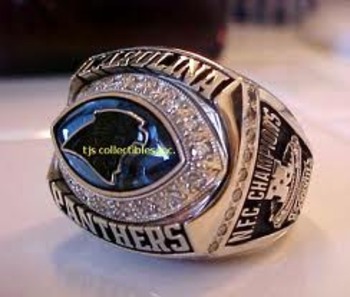
The Panthers joined the NFL as an expansion team in 1995 along with the Jaguars. With the league currently a tidy 32 clubs, it is unlikely expansion will ever occur again.
In 1987, Jerry Richardson submitted his interest in obtaining an NFL expansion team. The NFL had announced that the league would expand to two more teams and Richardson wanted to be at the front of the line. A stadium site was then selected, and in 1989, Richardson unveiled plans for a privately funded venue in uptown Charlotte.
In 1992, the NFL cut their expansion list from 11 prospective cities to seven. In May, the list was reduced to five cities: Memphis, Baltimore, Jacksonville, Charlotte and St. Louis. Finally, on October 26, 1993, the NFL awarded Charlotte the first of two expansion teams.
In only the fourth season, the team won their division. In 2003, the Panthers won the NFC crown and subsequently lost to the Patriots 32–29 in a tightly played Super Bowl XXXVIII.
Richardson’s son Mark is responsible for the selection of the team name "Panthers." Mark felt that there should be some “synergy” between the name and the team colors and also suggested the team colors of black, blue and silver.
Origin Facts:
Established: 1995
Original Owner: Jerry Richardson
Original Colors: Black, blue, silver & white
First Stadium: Memorial Stadium, seating 80,301
Retired Jerseys: No. 51 Sam Mills
Buffalo Bills
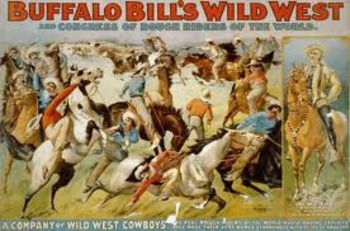
The City of Buffalo has a long history with pro football with several different teams before the formation of the NFL, most notably the Niagras. The "Buffalo All-Americans" joined the NFL’s first season in 1920 and competed until 1923 when the team went through two other nickname changes.
In 1946, the city held a franchise in the newly formed AAFC. The team was called the "Bisons" in the first season but was changed to the "Bills" for the other three years. The club did very well on the field and was widely supported at the gate. When the AAFC merged into the NFL in 1950, three clubs were admitted. Buffalo, however, was not one of them.
The city was livid. Buffalo had an excellent following, better attendance and their team was far superior to the third team accepted—the Colts. Suddenly, their team was regulated to the junk pile which angered team followers. Bills’ fans petitioned the NFL for inclusion into the league, then generated over 15,000 season ticket pledges and raised $175,000. Later, it was divulged that the Colts had paid the NFL Redskins a $150,000 territorial fee, and that Bills’ owner Jim Breuil had accepted a one-fourth ownership package with the four-time AAFC Champion Browns.
But the success of the AAFC Bills would ultimately set the stage for the 1960 version.
Buffalo was one of the first franchises named in the AFL. Owner Ralph Wilson was quite wealthy and had attempted to purchase a NFL expansion team, but like all the rest was repeatedly turned down. Because of the success of the AAFC Bills, it was a natural fusion with the newer rendition. The nickname originally came from the fabled Wild West showman, William “Buffalo Bill” Cody.
Origin Facts:
Established: 1960
Original Owner: Ralph Wilson
Original Colors: Royal blue, red & white
First Stadium: War Memorial Stadium, seating 46,500
Retired Jerseys: No. 12 Jim Kelly
Baltimore Ravens
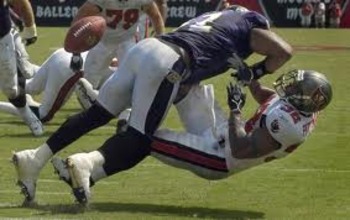
Once upon a time, in order for a NFL team to move to another city a three-fourths majority vote by the other owners was mandatory. The Raiders changed all that. The owners had rejected Oakland owner Al Davis’ request to relocate from Oakland to Los Angeles to which he moved the team anyway, filed a lawsuit and won.
Baltimore Colts owner Robert Irsay wanted a better stadium and a better stadium deal. In 1972, a proposal was presented to build a magnificent stadium complex located next to Camden Yards including a stadium called the “Baltodome.” But the proposal did not receive enough support to pass the Maryland legislature to which then-Governor Marvin Mandel axed the project altogether.
Irsay approached other cities for relocation including Jacksonville, Indianapolis, Birmingham, Memphis, New York and Phoenix. He asked for a league vote to approve any such move. The owners, fresh off the Raiders debacle, didn’t vote “yes” or “no." They simply stated that the Colts possible move wasn’t a league matter but rather a team matter.
So, the Colts left Baltimore for Indianapolis in 1984.
The City of Baltimore was suddenly without pro football. At the same time, the stadium problems Irsay had in Baltimore Browns' owner Art Modell was going through in Cleveland. So, Modell moved his Browns to Baltimore with the incentive of a new stadium, located next to Camden Yards. How ironic.
But something happened in this relocation that has never occurred before.
After legal actions were filed against Modell and the Browns, eventually Cleveland accepted a legal settlement from the NFL. The conditions of the settlement were exclusive to this situation: the Browns nickname, colors, player history, awards, records, logo, achievements, and even team history, would not accompany Modell to Baltimore but would remain in Cleveland.
In addition, Cleveland would get another team either by expansion or by relocation of an existing team. In the meantime, the newly relocated former Browns Baltimore team needed some identity, like colors, a new nickname, and a logo.
A “name-the-team” contest was held. Baltimore management poured through the entries and came up with a list of 17. From there, it was narrowed down to six and then to three: Americans, Ravens and Marauders. The last step was for the fans to vote on the final three entries. From the 33,288 voters, "Ravens" won out to honor author Edgar Allan Poe, who lived and is buried in Baltimore.
Four years later, the franchise would win Super Bowl 35.
Origin Facts:
Established: 1996
Original Owner: Art Modell
Original Colors: Purple, black, gold & white
First Stadium: Memorial Stadium, seating 53,371
Retired Jerseys: none
Atlanta Falcons
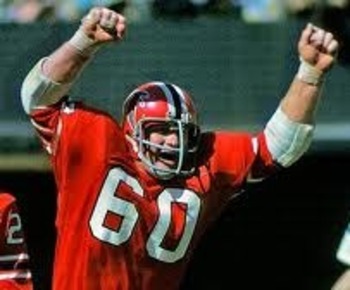
The Falcons are a team that exists simply because of the rival AFL.
In June of 1965, a group of Atlanta businessmen were granted an AFL franchise provided they could get exclusive use of the newly-opened Atlanta Stadium. The NFL had discussed expansion to Atlanta in the past, but had not made any moves to this effect.
When NFL commissioner Pete Rozelle heard that the new league was going to set up shop in Atlanta, he booked the next flight and forced the group to decide between the AFL or the NFL as an expansion team. The established league won out.
In 1989, the Falcons drafted one of the best cornerbacks in NFL history with Deion Sanders.
In a “name-the-team” contest, 558 separate nicknames were submitted. Several suggested "Falcons", but the entry of school teacher Julie Elliott was chosen with her summation that “the falcon is proud and dignified with great courage and fight.”
Origin Facts:
Established: 1966
Original Owner: Rankin Smith, Sr.
Original Colors: red, black & white
First Stadium: Atlanta Stadium, seating 60,606
Retired Jerseys: No. 60 Tommy Nobis, No. 87 Claude Humphrey, No. 57 Jeff Van Note, No. 10 Steve Bartkowski, No. 78 Mike Kenn, No. 31 William Andrews, No. 58 Jessie Tuggle
Arizona Cardinals
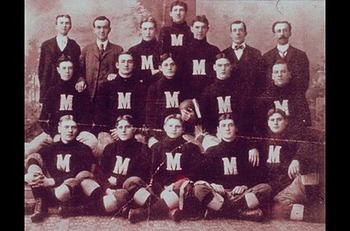
The Cardinals are an NFL charter member and the oldest continuous professional football team in existence dating back to 1898.
The franchise began as a Chicago neighborhood football team called the "Morgan Athletic Club." They then began known as the "Racine Normals" after playing their home games at a football field on Racine Street near Normal Boulevard.
In 1901, team owner Chris O’Brien got an exceptional deal on some used red football uniforms from the University of Chicago. When the uniforms arrived, upon unloading the jerseys, the team manager commented that the jerseys were “faded red,” to which O’Brien exclaimed that they weren’t faded red but indeed “cardinal red.”
After that, the club was known as the "Racine Cardinals," which the nickname was originally about the color rather than the bird.
The team became champions of the Chicago Football League in 1917. In September of 1920, O’Brien's Racine Cardinals joined the newly formed American Professional Football Association (later renamed the NFL) for a $100 entry fee.
The Racine Cardinals changed their team name in 1922 after a team from Racine, Wisconsin began playing in the NFL. Not to be confused with the "Racine Legion," the club was now known as the "Chicago Cardinals." In 1944, the team was short of players as most of their roster went into World War II. The club merged with the Pittsburgh Steelers and became "Card-Pitt." After losing most of their games, a sports writer dubbed them the "Carpits." In 1945, the franchise was renamed the Chicago Cardinals.
The Cardinals moved from Chicago to St. Louis in 1960 and became the "St. Louis Cardinals." In 1988, the club relocated to Tempe, Arizona and was christened the "Phoenix Cardinals." Then in 1994, the franchise endured another name change and became the "Arizona Cardinals", based in the Phoenix area. Currently, the team plays and is headquartered in Glendale, Arizona.
The team has won two NFL titles: 1925 and 1947. The 1925 title was controversial in that the "Pottsville Maroons" claim they were the true champions. As late as 2003, members of the Pottsville community had petitioned the NFL to award the league title, but were finally denied 30-2 by the league owners and commissioner Paul Tagliabue. Currently, in the Pro Football Hall of Fame, rests a hand-carved trophy out of coal by members of the 1925 Maroons.
Origin Facts:
Established: 1898
Original Owner: Chris O’Brien
Original Colors: Cardinal red & white
First Stadium: Normal Park, seating 6,000
Retired Jerseys: No. 99 Marshall Goldberg, No. 77 Stan Mauldin, No. 8 Larry Wilson, No. 88 J.V. Cain, No. 40 Pat Tillman
American Football Conference / National Football Conference
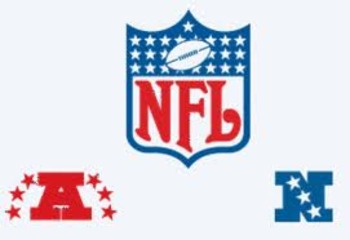
After the merger between the AFL and NFL was agreed upon and announced in 1966, there were several items dangling that needed to be addressed. One of which would be how the conferences and divisions would be structured.
Even though the leagues would meld into one, there was still quite a bit of animosity among AFL and NFL owners towards each other. This is understandable since each had attempted to destroy the other for years. At the time, the NFL comprised 16 teams while the AFL had 10.
At the 1969 owners meeting, NFL commissioner Rozelle announced that the two conferences would be called "American Football Conference" (AFC) and "National Football Conference" (NFC). And as an aside, the AFC would consist of the 10 AFL teams while the NFC would contain the 16 NFL clubs.
The AFL owners were livid, especially Bengals owner/coach Paul Brown and Raiders owner Al Davis. Before the meeting was adjourned, Rozelle relented and said that both conferences would somehow contain 13 teams.
This meant one thing: three NFL clubs would have to join up with the AFL and the newly formed AFC.
At the next owners' meeting, Rozelle stated that any club that switched would receive a one-time stipend of $3 million if they agreed to join the AFC. It was mutually decided that the Packers, Bears, Cowboys and Giants would not be part of the jump, but every other team was open. Rozelle kept the owners together for 30 hours until finally Colts' owner Carroll Rosenbloom relented. Browns' owner Art Modell then stated he would go to the AFC, but only if his friend Art Rooney of the Steelers would join him.
Ironically, the very first Super Bowl after the merger pitted the Colts against the Cowboys--two former NFL teams.